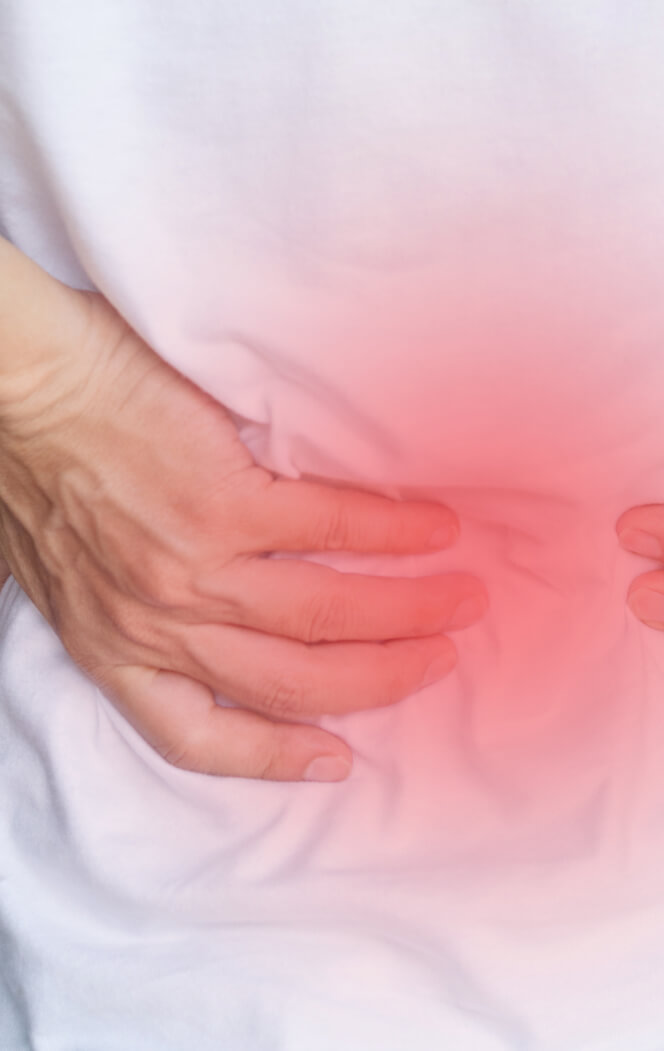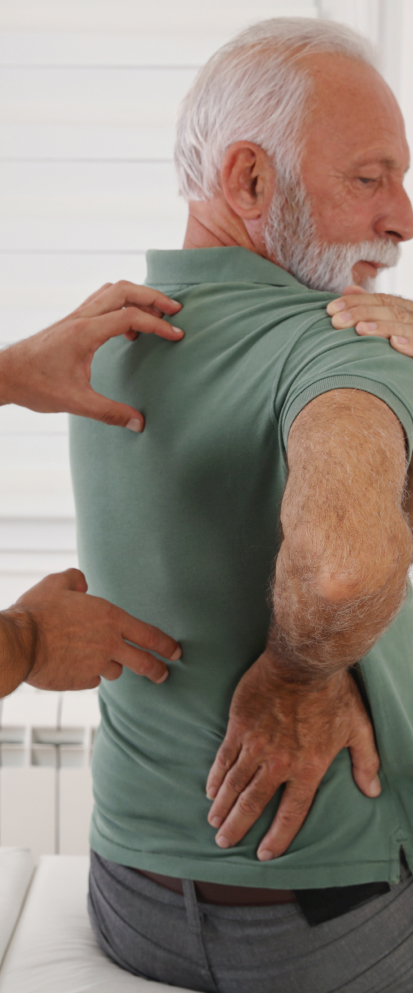
Spinal Stenosis
- Degenerative Disc Disease
- Herniated Disc
- Lower Back Pain
- Neck Pain
- Sciatica (Lumbar Radiculopathy)
- Spinal Arthritis
- Spinal Deformities
- Spine Infections
- Spinal Stenosis
- Spine Trauma and Spinal Cord Injuries
- Spinal Tumors and Cancer
- Spondylosis
- Tingling in Arms (Cervical Radiculopathy)
- Upper Back Pain
Spinal stenosis occurs when one or more bony openings (foramina) within the spine begin to narrow and reduce space for the nerves.
What Is Spinal Stenosis?
Spinal stenosis is a narrowing of the open spaces within your spinal canal (backbone), which can put pressure on both the spinal cord and the nerves. It is often the result of osteoarthritis. Spinal stenosis occurs most often in the lower back and neck. Patients with spinal stenosis in the neck or cervical spine usually present with neck pain, radiating pain down the arms, with numbness, tingling, and weakness, and in some cases clumsiness with grip and simple hand movements. People suffering from lower back or lumbar spinal stenosis typically complain of severe pain in the legs, calves, or lower back. Some people may even experience balance issues, as well as disorders of the feet, bowel and bladder. Standing and walking generally aggravate the condition, resulting in pain. However, sitting down or leaning over can provide some relief.
Spinal Stenosis
Your spinal nerves travel through your spinal canal and exit through openings we call “foramen.” If any of these spaces are too narrow, your nerves become compressed. We say you have “spinal stenosis.” It’s a problem that most often happens in the neck and lower back.
What Causes Spinal Stenosis?

Some people are born with a small spinal canal. This is known as “congenital stenosis.” The most common cause, however, is degeneration due to aging. This “acquired spinal stenosis” typically affects men and women over the age of 50.
Certain medical conditions can also cause spinal stenosis. These include:
- Osteoarthritis
- Rheumatoid arthritis
- Spinal tumors
- Spinal instability
- Trauma
- Paget’s disease of the bone
- Ossification of the posterior longitudinal ligament

Diagnosis and Treatment of
Spinal Stenosis
You will need to see your doctor for a proper diagnosis. He or she may use a variety of approaches to diagnose spinal stenosis and rule out other conditions. Some approaches include:
- Medical history
- Physical examination
- X-rays
- Magnetic Resonance Imaging (MRI)
- Computed Tomography (CT) with or without a Myelogram
- Bone scan
The information acquired through the physical exam and imaging tests will help your doctor diagnose your condition. It will also help your doctor plan the best treatment for your spinal stenosis.
Spinal Stenosis Treatment Options

If you’ve been diagnosed with spinal stenosis, the next step is getting treatment. A variety of doctors can offer treatment. The type of doctor who treats you will be based on the severity of your condition. Some doctors you may encounter include internists, general practitioners, rheumatologists, neurologists, orthopedic surgeons, neurosurgeons, and physical therapists.
Non-surgical Treatment Options for Spinal Stenosis
There are a variety of nonoperative treatments for spinal stenosis. Some common options include:
- Exercises and/or physical therapy to help stabilize the spine. With exercise, patients can maintain motion of the spine, strengthen abdominal and back muscles, and build a strong core as well as endurance.
- Nonsteroidal anti-inflammatory drugs (NSAIDs), such as ibuprofen, aspirin, and naproxen to reduce inflammation and relieve pain.
- Anesthetic and/or corticosteroid injections in the epidural space, around the nerves (CESI and LESI).
- Lumbar brace or corset to provide support.
- Restricted or modified activity.
There are also some alternative therapies that may be used for spinal stenosis. Some examples of these therapies used include chiropractic treatment and acupuncture.
Surgical Treatments for Spinal Stenosis
While nonsurgical treatments can relieve pain for a period of time, they do not permanently alter the conditions causing spinal stenosis. In most cases, a doctor will recommend nonsurgical treatments first. However, surgery might be considered immediately if the spinal stenosis has reached a serious stage. Examples of this are numbness or weakness that interferes with walking, impaired bowel or bladder function, or other neurological involvement. The patient’s pain, preference, and reaction to nonsurgical treatments will factor into whether surgery is the best option.
A decompression laminectomy is the gold standard of surgery for treating spinal stenosis. This surgery removes the bony spurs and buildup of bone in the spinal canal, giving more room for the spinal cord and nerves. These days, the decompression can be successfully accomplished using minimally invasive techniques, allowing the patients to have less pain, and a faster recovery. The doctor will at times need to perform a spinal fusion, connecting two or more vertebrae together, for better spinal support. This is usually done in cases of significant spinal deformity, or instability, especially if there is advanced arthritis in the facet joints of the spine.
If you are in the North Houston, Conroe, The Woodlands, Spring area and believe you need to see a spine specialist for spinal stenosis, call our office at 281-880-0700 to schedule an appointment with Dr. Fayaz.